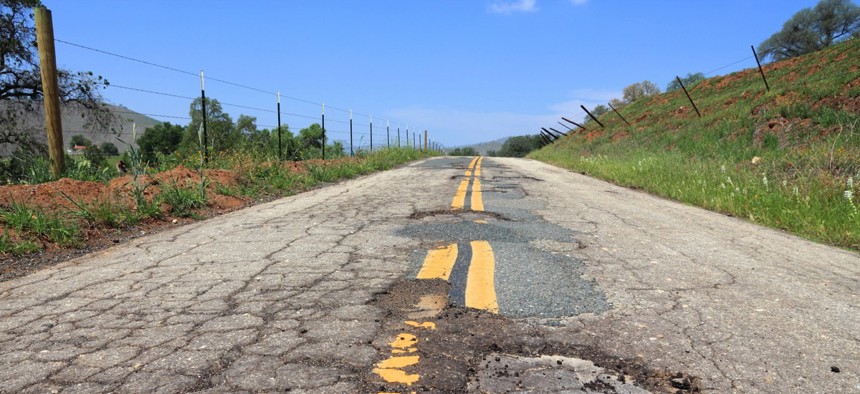Can California Be ‘Road Shamed’ Into Passing a Gas Tax Increase?

Tupungato / Shutterstock.com
Video of these neglected roads will leave you feeling for the car.
With no word on a deal to end the Golden State’s $137 billion highway maintenance backlog, the California Alliance for Jobs has taken to “road-shaming” lawmakers.
The lobbying group represents more than 2,000 construction companies and 80,000 union workers wanting more public infrastructure projects and began posting footage of bad local roads from a car’s perspective.
Gov. Jerry Brown called a legislative special session in June to “enact permanent and sustainable funding to maintain and repair the state’s transportation and critical infrastructure, improve the state’s key trade corridors and complement local infrastructure efforts.”
Despite the general consensus that both Democratic and Republican legislators are seriously committed to fixing California’s failing transportation network for the first time since the 1980s, after four months of nothing CAJ rattled off its first video . In it, Bay Area, Central Valley, Southern California and San Diego roads are featured.
One month later, CAJ followed up with this video of pavement conditions in San Joaquin, Riverside and San Bernardino counties.
The message ? Without a state gas tax increase—last approved in 1994 to 18 cents per gallon—25 percent of California’s roads will look like the ones in these videos within a decade.
Transportation funding is largely a state responsibility, California’s maintenance backlog at $59 billion and at the local level $78 billion.
Apart from inflation, increasingly popular fuel-efficient hybrid and electric vehicles have made a dent in the state’s gas tax revenues.
A Democratic proposal would see the tax raised 12 cents in addition to select vehicle fees for $4.3 billion in additional, annual revenue. But Dems lack the supermajority to force the increases through, and Republicans favor a $6.6 billion proposal that includes eliminating 3,500 “redundant” Caltrans positions and rerouting commercial vehicle weight fees currently going into California’s general fund.
“Unfortunately, Assembly Republicans instead propose to kick the can down a potholed road, and send the General Fund back into deficit,” Caltrans Secretary Brian Kelly wrote in a September open letter . “Transportation needs a permanent and stable funding plan—not more budget gimmicks and borrowing—to avoid the volatility of the past two decades.”
The gridlock has counties worrying about their ongoing regional transportation projects, forced to compete for scarce California Transportation Commission resources.
Santa Barbara County officials fear they won’t get the $135 million in funding needed for the next phase of a high occupancy vehicle lane project for Highway 101, more than 10 years in the making.
“We’re always in a lot of competition, especially from the Los Angeles basin in particular,” Janet Wolf, Second District supervisor, told the Lompoc Record . “I am anticipating that they will look favorably at this. It’s critical.”
Dave Nyczepir is News Editor for Government Executive’s Route Fifty.
NEXT STORY: In Wake of Paris, How Prepared Are U.S. States, Cities?






